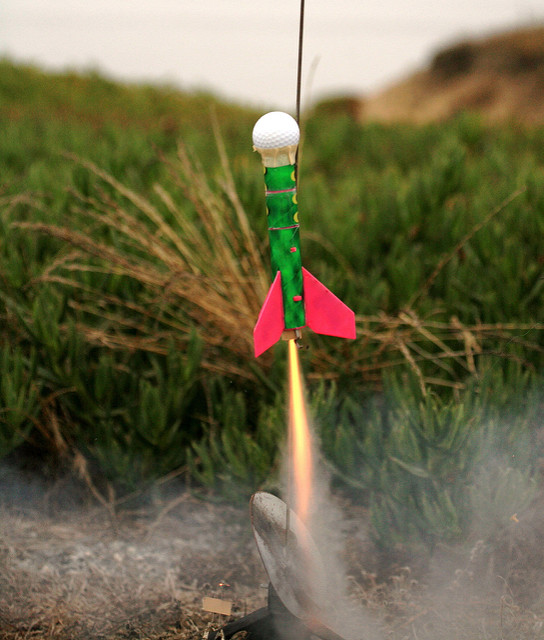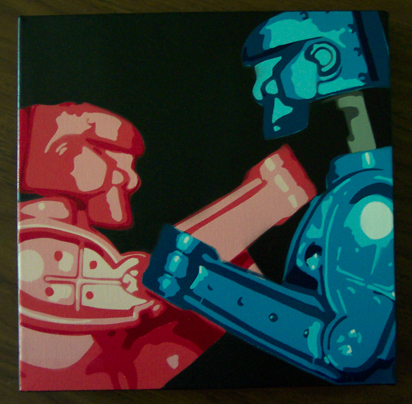Archive for the ‘Level 5 Courage’ Category
Creating the Causes and Conditions for Self Growth – once a week for the last eight years.
 With this blog post, I’ve written a blog post every Wednesday night for eight years, with no misses and no repeats.
With this blog post, I’ve written a blog post every Wednesday night for eight years, with no misses and no repeats.
It started while on vacation at a friend’s house where he suggested I write a blog. I had no idea what a blog was or how to write one. I didn’t know that a blog usually sits on a website and I didn’t know how to make a website or even how to pay someone to make one. And once I stopped hiding behind the transactional work, I realized I didn’t know what to write about or how to start.
Right out of the gate I learned that starting is difficult. I was anxious and afraid and I told myself all sorts of scary stories that didn’t come true. As I pushed through the basics of creating a website, there were plenty of opportunities to stop, but I didn’t. There was a force pushing me, and though I didn’t know where it came from I was happy when it woke up with me every morning and stayed by my side.
Before starting I had no website and then I had one. I moved from no to yes. Creating something from nothing feels great when you’re done, but not beforehand. But I wasn’t even done starting.
The first time I faced the blank screen I was paralyzed. I had many ideas and none of them good enough. I wrote and rewrote paragraphs and scrapped them. I wrote whole drafts and scrapped them. I didn’t have the confidence to say what I wanted to say and let people judge my work. What would they say about me? Would they think about me? Do my words make sense? Are they interesting? Are they right?
At some point I got too tired, my resistance weakened and I hit the publish button. I was still afraid, but in a moment of weakness I sent it anyway. Though I catastrophized before sending, nothing bad happened when I sent it. Nothing good happened either, and I was fine with both.
Self-judgment is a powerful blocking mechanism, but I broke through for the first time. Now, going on 416 times, I’ve started with a blank screen, pushed through my self-judgment and wrote a post. It’s easier now, but it’s still not easy. And it won’t be easy next year. In fact, what I learned is the posts that caused the most uneasiness in me made the largest impact on others. I learned if I put my deepest personal thoughts into my writing, others appreciated it. But more importantly, I stood three inches taller after writing it.
With my posts, every week I must to create something from nothing. Every week I must think deeply, distill and write clearly. At the end of every post, I know more about the subject I wrote about. In that way, I can be my own teacher. And every week I must push through my self-doubt and publish. And in that way, every week I create the causes and conditions for self-growth.
Everything gets better with practice. And my practice of starting with nothing and ending with something has helped me be more effective in domains of high uncertainty. I still feel anxious, but I know it won’t hurt me. And now I use my anxiety for good – as a leading indication that I’m working in new design space. And when I don’t feel anxious, I know to stop what I’m doing and work on something else.
Image credit – Steve Jurvetson
Put Yourself Out There
 If you put yourself out there and it doesn’t go as you expect, don’t get down. All you are responsible for is your effort and your intentions. You’re not responsible for the outcome. Intentions don’t drive outcomes. In fact, be prepared for your work to bring out the opposite of your intentions.
If you put yourself out there and it doesn’t go as you expect, don’t get down. All you are responsible for is your effort and your intentions. You’re not responsible for the outcome. Intentions don’t drive outcomes. In fact, be prepared for your work to bring out the opposite of your intentions.
If you put yourself out there and it goes poorly, don’t judge yourself negatively. Sometimes, things go that way. It’s not a problem, unless you make it one. So, don’t make it one. Just put yourself out there.
The clothes don’t get clean without an agitator. Hold onto that, and put yourself out there.
How do you know you’ve put yourself out there? The status quo is angry with you. The people in power want you to stop. The organization tries to scuttle your work. And the people that know the truth take you out to lunch.
If you put yourself out there and your message is met with 100% agreement, you didn’t put yourself out there. You may have stepped outside the lines, but you didn’t put your whole self on the line. You didn’t splash everyone with a full belly flop. There wasn’t enough sting and your belly isn’t red enough.
You won’t get it right, but put yourself out there anyway. You can’t predict the outcome, but take a run at the status quo. You don’t know how it will turn out, but that’s not a reason to hold back, it’s objective evidence it’s time to take a run at it.
Don’t put yourself out there because it’s the right thing to do, put yourself out there because you have an emotional connection. Put yourself out there because it’s time to put yourself out there. Put yourself out there because you don’t know what else to do.
Be prepared to be misunderstood, but put yourself out there. Expect to be laughed at and talked about behind your back, but put yourself out there. And expect there will be one or two people who will have your back. You know who they are.
No sense holding back. Get over the fear and put yourself out there.
The only one holding you back is you.
Image credit – Mark Bonica
Success – the Enemy of New Work
 Success is the enemy of new work. Past success blocks new work out of fear it will jeopardize future success, and future success blocks new work out of fear future success will actually come to be.
Success is the enemy of new work. Past success blocks new work out of fear it will jeopardize future success, and future success blocks new work out of fear future success will actually come to be.
Either way you look at it, success gets in the way of doing new work.
Success itself has no power to block new work. To generate its power, past success creates the fear of loss in the people doing today’s work. And their fear causes them to block new work. When we did A we got success, and now you are trying to do B. B is not A, and may not bring success. I will resist B out of fear of losing the goodness of past success.
As a blocking agent, future success is more ethereal and more powerful because it prevents new work from starting. Future success causes our minds to project the goodness and glory the new work could bring and because our small sense of self doesn’t think we’re worthy, we never start. Where past success creates an enemy in the status quo, future success creates an enemy within ourselves.
But if we replace fear with learning, the game changes.
I’m not trying to displace our past success, I’m trying to learn if we can use it as springboard and back flip into the deep end of our future success. If it works, our learning will refine today’s success and inform tomorrow’s. If it doesn’t work, we’ll learn what doesn’t work and try something else. But not to worry, we’ll make small bets and create big learning. That way when we jump in the puddle, the splash will be small. And if the water’s cold, we’ll stop. But if it’s warm, we’ll jump into a bigger puddle. And maybe we’ll jump together. What do you think? Will you help me learn?
Yes, it’s scary to think about running this small experiment. Not because it won’t work, but because it might. If we learn this could work it would be a game-changer for the company and I’m afraid I’m not worthy of the work. Can you help me navigate this emotional roller coaster? Can you help me learn if this will work? Can you review the results privately and help me learn what’s going on? If we don’t learn how to do it, our competitors will. Can you help me start?
Success blocks, but it also pays the bills. And, hopefully it’s always part of the equation. But there are things we can do to take the edge of its blocking power. Acknowledge that new work is scary and focus on learning. Learning isn’t threatening, and it moves things forward. Show results and ask for comments from people who created past success. Over time, they’ll become important advocates. And acknowledge to yourself that new work creates internal fear, and acknowledge the best way to push through fear is to learn.
Be afraid, make small bets and learn big.
Image credit – Andy Morffew
Diabolically Simple Prototypes
 Ideas are all talk and no action. Ideas are untested concepts that have yet to rise to the level of practicality. You can’t sell an idea and you can’t barter with them. Ideas aren’t worth much.
Ideas are all talk and no action. Ideas are untested concepts that have yet to rise to the level of practicality. You can’t sell an idea and you can’t barter with them. Ideas aren’t worth much.
A prototype is a physical manifestation of an idea. Where ideas are ethereal, prototypes are practical. Where ideas are fuzzy and subject to interpretation, prototypes are a sledge hammer right between the eyes. There is no arguing with a prototype. It does what it does and that’s the end of that. You don’t have to like what a prototype stands for, but you can’t dismiss it. Where ideas aren’t worth a damn, prototypes are wholly worth every ounce of effort to create them.
If Camp A says it will work and Camp B says it won’t, a prototype will settle the disagreement pretty quickly. It will work or it won’t. And if it works, the idea behind it is valid. And if it doesn’t, the idea may be valid, but a workable solution is yet-to-be discovered. Either way, a prototype brings clarity.
Prototypes are not elegant. Prototypes are ugly. The best ones do one thing – demonstrate the novel idea that underpins them. The good ones are simple, and the best ones are diabolically simple. It is difficult to make diabolically simple prototypes (DSPs), but it’s a skill that can be learned. And it’s worth learning because DSPs come to life in record time. The approach with DSPs is to take the time up front to distill the concept down to its essence and then its all-hands-on-deck until it’s up and running in the lab.
But the real power of the DSP is that it drives rapid learning. When a new idea comes, it’s only a partially formed. The process of trying to make a DSP demands the holes are filled and blurry parts are brought into focus. The DSP process demands a half-baked idea matures into fully-baked physical embodiment. And it’s full-body learning. Your hands learn, your eyes learn and your torso learns.
If you find yourself in a disagreement of ideas, stop talking and start making a prototype. If the DSP works, the disagreement is over.
Diabolically simple prototypes end arguments. But, more importantly, they radically increase the pace of learning.
Image credit – snippets101
Why not start?
 It doesn’t matter where the journey ends, as long as it starts.
It doesn’t matter where the journey ends, as long as it starts.
After starting, don’t fixate on the destination, focus on how you get there.
A long project doesn’t get shorter until you start. Neither does a short one.
Start under the radar.
When a project is too big to start, tear off a bite-sized chunk, chew it and swallow.
Sometimes slower is faster, but who cares. You’ve started.
If you can’t start, help some else start. You’ll both be better for it.
Fear blocks starting. But if you’re going to be afraid, you might as well start.
The only way to guarantee failure is to fail to start.
After you start, tell your best friend.
When starting, be clear on your location and less clear on the destination.
You either start or you don’t. With starting, there’s no partial credit.
Don’t start unless you’re going to finish.
Starting is scary, right up until you start.
The best way to free up time to start a good project is to stop a bad one.
Sometimes it’s best to stop starting and start finishing.
You don’t need permission to start. You just need to start.
Start small. If that doesn’t work, start smaller.
In the end, starting starts with starting.
And if you don’t start you can’t finish.
Image credit — jakeandlindsay
Sometimes things need to get worse before they can get better.
 All the scary words are grounded in change. Innovation, by definition, is about change. When something is innovative it’s novel, useful and successful. Novel is another word for different and different means change. That’s why innovation is scary. And that’s why radical innovation is scarier.
All the scary words are grounded in change. Innovation, by definition, is about change. When something is innovative it’s novel, useful and successful. Novel is another word for different and different means change. That’s why innovation is scary. And that’s why radical innovation is scarier.
Continuous improvement, where everything old is buffed and polished into something new, is about change. When people have followed the same process for fifteen years and then it’s improved, people get scared. In their minds improved isn’t improved, improved is different. And different means change. Continuous improvement is especially scary because it makes processes more productive and frees up people to do other things, unless, of course, there are no other things to do. And when that happens their jobs go away. Every continuous improvement expert knows when the first person loses their job due to process improvement the program is dead in the saddle, yet it happens. And that’s scary on a number of fronts.
And then there’s disruption. While there’s disagreement on what it actually is, there is vicious agreement that after a disruption the campus will be unrecognizable. And unrecognizable things are unrecognizable because they are different from previous experience. And different means change. With mortal innovation there are some limits, but with disruption everything is fair game. With disruption everything can change, including the venerable, yet decrepit, business model. With self-disruption, the very thing responsible for success is made to go away by the people that that built it. And that’s scary. And when a company is disrupted from the outside it can die. And, thankfully, that’s scary.
But change isn’t scary. Thinking about change is scary.
There’s one condition where change is guaranteed – when the pain of the current situation is stronger than the fear of changing it. One source of pain could be from a realization the ship will run aground if a new course isn’t taken. When pain of the immanent shipwreck (caused by fear) overpowers the fear of uncharted waters, the captain readily pulls hard to starboard. And when the crew realizes it’s sink or swim, they swim.
Change doesn’t happen before it’s time. And before things get bad enough, it’s not time.
When the cruise ship is chugging along in fair seas, change won’t happen. Right before the fuel runs out and the generators quit, it’s all you can eat and margaritas for everyone. And right after, when the air conditioning kicks out and the ice cream melts, it’s bedlam. But bedlam is not the best way to go. No sense waiting until the fuel’s gone to make change. Maybe someone should keep an eye the fuel gauge and let the captain know when there’s only a quarter tank. That way there’s some time to point the ship toward the closest port.
There’s no reason to wait for a mutiny to turn the ship, but sometimes an almost mutiny is just the thing.
As a captain, it’s difficult to let things get worse so they can get better. But if there’s insufficient emotional energy to power change, things must get worse. The best captains run close to the reef and scrape the hull. The buffet tables shimmy, the smoked salmon fouls the deck and the liquor bottles rattle. And when done well, there’s a deep groan from the bowels of the ship that makes it clear this is no drill. And if there’s a loud call for all hands on deck and a cry for bilge pumps at the ready, all the better.
To pull hard in a new direction, sometimes the crew needs help to see things as they are, not as they were.
Image credit – Francis Bijl
Where there’s fun there is no fear.
 For those who lead projects and people, failure is always lurking in the background. And gone unchecked, it can hobble. Despite best efforts to put a shine on it, there’s still a strong negative element to failure. No two ways about it, failure is mapped with inadequacy and error. Failure is seen as the natural consequence of making a big mistake. And there’s a finality to failure. Sometimes it’s the end of a project and sometimes it’s the end of a career. Failure severely limits personal growth and new behavior. But at least failure is visible to the naked eye. There’s no denying a good train wreck.
For those who lead projects and people, failure is always lurking in the background. And gone unchecked, it can hobble. Despite best efforts to put a shine on it, there’s still a strong negative element to failure. No two ways about it, failure is mapped with inadequacy and error. Failure is seen as the natural consequence of making a big mistake. And there’s a finality to failure. Sometimes it’s the end of a project and sometimes it’s the end of a career. Failure severely limits personal growth and new behavior. But at least failure is visible to the naked eye. There’s no denying a good train wreck.
A fumble is not failure. When something gets dropped or when a task doesn’t get done, that’s a fumble. A fumble is not catastrophic and sometimes not even noteworthy. A fumble is mapped with a careless mistake that normally doesn’t happen. No real cause. It just happens. But it can be a leading indicator of bigger and badder things to come, and if you’re not looking closely, the fumble can go unnoticed. And the causes and conditions behind the fumble are usually unclear or unknown. Where failure is dangerous because everyone knows when it happens, fumbles are dangerous because they can go unnoticed.
Floundering is not fumbling. With floundering, nothing really happens. No real setbacks, no real progress, no real energy. A project that flounders is a project that never reaches the finish line and never makes it to the cemetery. To recognize floundering takes a lot of experience and good judgment because it doesn’t look like much. But that’s the point – not much is happening. No wind in the sails and no storm on the horizon. And to call it by name takes courage because there are no signs of danger. Yet it’s dangerous for that very reason. Floundering can consume more resources than failure.
Fear is the fundamental behind failing, fumbling and floundering. But unlike failure, no one talks about fear. Talking about fear is too scary. And like fumbling and floundering, fear is invisible, especially if you’re not looking. Like diabetes, fear is a silent killer. And where diabetes touches many, fear gets us all. Fear is invisible, powerful and prolific. It’s a tall order to battle the invisible.
But where there’s fun there can be no fear. More precisely, there can be no negative consequence of fear. When there’s fun, everyone races around like their hair is on fire. Not on fire in the burn unit way, but on fire in the energy to burn way. When there’s fun people help each other for no reason. They share, they communicate and they take risks. When there’s fun no one asks for permission and the work gets done. When there’s fun everyone goes home on time and their spouses are happy. Fun is easy to see, but it’s not often seen because it’s rare.
If there’s one thing that can go toe-to-toe with fear, it’s fun. It’s that powerful. Fun is so powerful it can turn failure into learning. But if it’s so powerful, why don’t we teach people to have fun? Why don’t we create the causes and conditions so fun erupts?
I don’t know why we don’t promote fun. But, I do know fun is productive and fun is good for business. But more important than that, fun is a lot of fun.
Image credit – JoshShculz
Dangerous Expectations
 Expectations result from mental models and wants. When you have a mental model of a system and you want the system to behave in a way that fits your mental model, that’s an expectation. And when you want the system to behave differently than your mental model, that’s also an expectation. When the system matches your wants, the world is good. And when your wants are out of line with the system, the world is not so good.
Expectations result from mental models and wants. When you have a mental model of a system and you want the system to behave in a way that fits your mental model, that’s an expectation. And when you want the system to behave differently than your mental model, that’s also an expectation. When the system matches your wants, the world is good. And when your wants are out of line with the system, the world is not so good.
Speculation is not expectation. Speculation happens when you propose, based on your mental model, how the system will behave. With speculation, there’s no attachment to the result, no wanting it to be one way or another. There’s just watching and learning. If the system confirms your mental model, the applicability of the model is reinforced (within this narrow context.) And when the system tramples your mental model, you change your mental model. No attachment, no stress, no whining, no self-judgement.
When doing work that’s new, system response is unknown. Whether the system will be exercised in a new way or it’s an altogether new system, metal models are young and untested. When it’s the first time, speculation is the way to go. Come up with your best mental model, run the experiment and record the results. After sitting in data, refine your mental model and repeat. If your mental model doesn’t fit the system, don’t judge yourself negatively, don’t hold yourself back, don’t shy away. Refine your mental model and build-test-learn as fast as you can. And if your mental model fits the system, don’t judge yourself in a positive way. This was your first test and you don’t understand the system fully. Refine your model and test for a deeper understanding. [Note – systems have been known to temporarily conform to mental models to obfuscate their true character.]
When doing work that’s new, expectation gets in the way. If you expect your models to be right and they’re not, you learning rate is slower than your expectations. That’s not such a big deal on its own, but the rippling self-judgement can be crippling. Your emotional state becomes fragile and it’s difficult to keep pushing through the work. You doubt yourself and your abilities; you won’t put yourself out there; and you won’t propose radical mental models for fear of looking like you don’t know what you’re doing. You won’t run the right experiments and you never the understand the fundamental character of the system. You block your own learning. If you expect your models won’t to fit the system, you block your learning from the start. Sometimes your lack of confidence blocks you from even trying. [Note – not trying is the only way to guarantee you won’t learn.]
Within the domain of experiments, mental models and generic systems, it’s relatively easy to see the wisdom of speculations and the perils of expectations, where wanting leads to judging and judging leads to self-blocking. But it’s not so easy to see in the domain of life where experiments are replaced with personal interactions and generic systems are replaced with everyday situations and mental models are ever-present. But in both domains the rules and consequences are the same.
Just as in the lab, in day-to-day life expectations are dangerous.
Image credit – Dermot O’Halloran
If you believe…
If you believe the work is meaningful, best effort flows from every pore.
If you believe in yourself, positivity carries the day.
If you believe the work will take twelve weeks, you won’t get it done in a day-and-a-half.
If you believe in yourself, when big problems find you, you run them to ground.
If you believe people have good intensions, there are no arguments, there is only progress.
If you believe in yourself, you are immune to criticism and negative self-talk.
If you believe people care about you, you’re never lonesome.
If you believe in your team, there’s always a way.
If you believe in yourself, people believe in you. And like compound interest, the cycle builds on itself.
Image credit – Joe Shlabotnik
Hire people that run toward even the toughest problems.
 If you don’t have a problem, there’s no problem. There are no resources without a problem and certainly no focus or momentum. If you don’t know your problem, stop. Take time to define your problem using a single page. Make a sketch or make a block diagram but make it clear. Make it so the problem description stands on its own. After you’ve defined your problem and someone calls it an “opportunity”, walk away because they can’t help you. Taking advantage of opportunities is optional, but solving problems is mission critical. No one worth their salt works on opportunities. Rock stars solve problems.
If you don’t have a problem, there’s no problem. There are no resources without a problem and certainly no focus or momentum. If you don’t know your problem, stop. Take time to define your problem using a single page. Make a sketch or make a block diagram but make it clear. Make it so the problem description stands on its own. After you’ve defined your problem and someone calls it an “opportunity”, walk away because they can’t help you. Taking advantage of opportunities is optional, but solving problems is mission critical. No one worth their salt works on opportunities. Rock stars solve problems.
After you’ve gnawed on a problem for a month and it hasn’t given in, what do you do? When you’ve thrown everything at a problem and it still stands tall, what do you do? When you’ve tried all your tricks and the intractable problem is still blocking an already overdue product launch, what do you do? What you do is find someone who is unafraid trade an intractable problem for a solvable one, someone who will courageously give ground with the hope of opening up new design space, someone who will unabashedly take an anti-conventional (and hopefully controversial) approach. What you do is find a rock star.
Intractable problems are not usually intractable; rather, intractable problems are either poorly-defined problems or are the wrong problem altogether. Either way, it takes someone with courage, usually an outsider, to redefine the problem or see it differently. But because of pride, an outsider can be brought in only after the team has exhausted all other possibilities. Unless there’s a problem with the problem solving team (they can’t solve the problem), there’s no problem. And without a problem, the team won’t accept help from an outsider.
At the rodeo when the cowboy is bucked off the raging bull, the cowboy runs away from the bull but the rodeo clown runs toward the bull to distract it. Like the rodeo clown, the problem solving rock star runs toward raging problems at full tilt. The rock star puts it all on the line as she grabs the problem by the scruff of the neck, wrestles it to the ground and hog ties it. There’s no shyness, just well-practiced technique wrapped in implicit knowledge. With courage and a cloud of dust, it’s no-holds-barred problem solving until the problem gives it up. Nothing is sacred, no assumptions go unchallenged, and no details are too small to ignore. Like rodeo clowns, rock stars know their work looks funny from the outside, but they don’t care. All they care about is solving the problem at hand. Right here, right now.
Before your next intractable problem, take a minute to scan your organization for the special people who have the courage to run toward even the most difficult problems. Don’t be fooled by titles, positional power or how they dress. Look deeply because like rodeo clowns, your magical problem solvers may not look the part on the outside.
Image credit – Ed Schipul
Stop bad project and start good ones.
 At the most basic level, business is about allocating resources to the best projects and executing those projects well. Said another way, business is about deciding what to work on and then working effectively. But how to go about deciding what to work on? Here is a cascade of questions to start you on your journey.
At the most basic level, business is about allocating resources to the best projects and executing those projects well. Said another way, business is about deciding what to work on and then working effectively. But how to go about deciding what to work on? Here is a cascade of questions to start you on your journey.
What are your company’s guiding principles? Why does it exist? How does it want to go about its life? These questions create context from which to answer the questions that follow. Once defined, all your actions should align with your context.
How has the business environment changed? This is a big one. Everything is impermanent. Change is the status quo. What worked last time won’t work this time. Your success is your enemy because it stunts intentions to work on new things. Define new lines of customer goodness your competitors have developed; define how their technologies have increased performance; search YouTube to see the nascent technologies that will displace you; put yourself two years in the future where your customers will pay half what they pay today. These answers, too, define the context for the questions that follow.
What are you working on? Define your fully-staffed projects. Distill each to a single page. Do they provide new customer value? Are the projects aligned with your company’s guiding principles? For those that don’t, stop them. How do your fully-staffed projects compare to the trajectory of your competitors’ offerings? For those that compare poorly, stop them.
For projects that remain, do they meet your business objectives? If yes, put your head down and execute. If no, do you have better projects? If yes, move the freed up resources (from the stopped projects) onto the new projects. Do it now. If you don’t have better projects, find some. Use lines of evolution for technological systems to figure out what’s next, define new projects and move the resources. Do it now.
The best leading indicator of innovation is your portfolio of fully-staffed projects. Where other companies argue and complain about organizational structure, move your best resources to your best projects and execute. Where other companies use politics to trump logic, move your best resources to your best projects and execute. Where other successful companies hold on to tired business models and do-what-we-did-last-time projects, move your best resources to your best projects and execute.
Be ruthless with your projects. Stop the bad ones and start some good ones. Be clear about what your projects will deliver – define the novel customer value and the technical work to get there. Use one page for each. If you can’t define the novel customer value with a simple cartoon, it’s because there is none. And if you can’t define how you’ll get there with a hand sketch, it’s because you don’t know how.
Define your company’s purpose and use that to decide what to work on. If a project is misaligned, kill it. If a project is boring, don’t bother. If it’s been done before, don’t do it. And if you know how it will go, do something else.
If you’re not changing, you’re dying.
Image credit – David Flam

 Mike Shipulski
Mike Shipulski